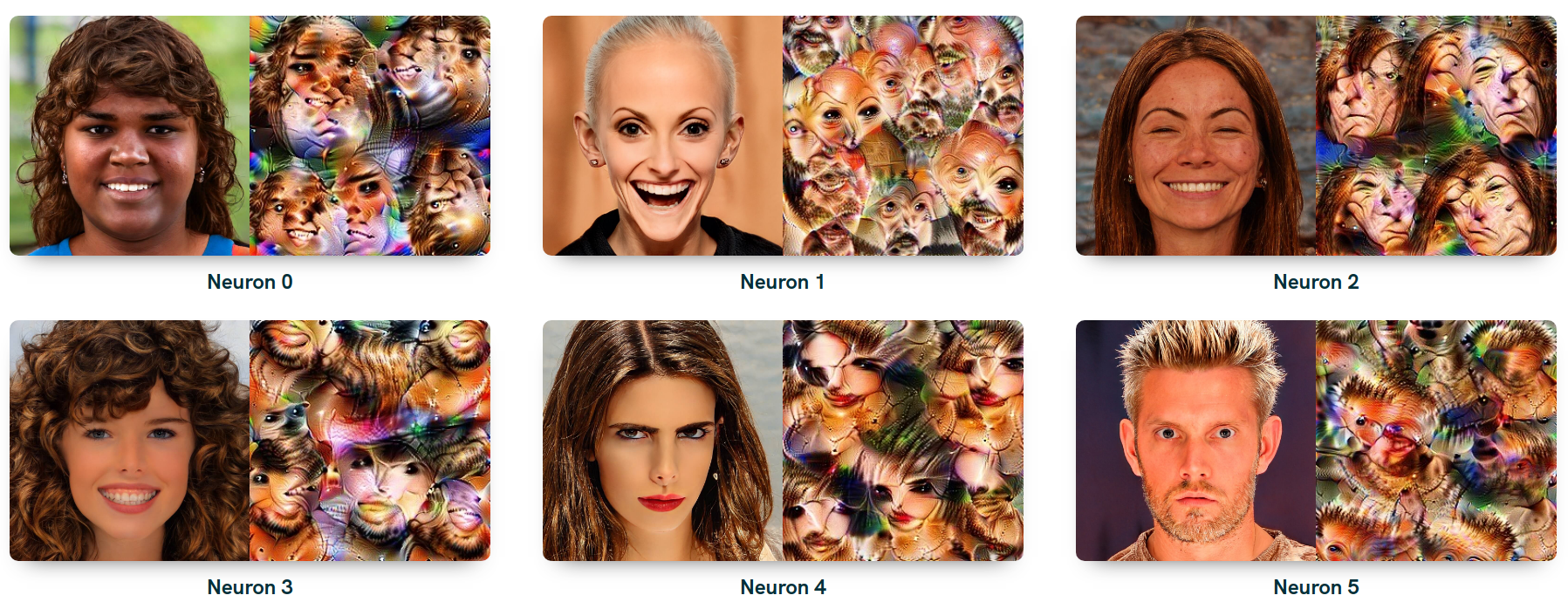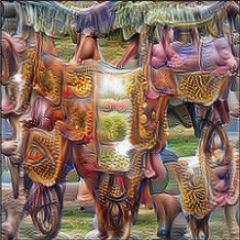Analysing Clarity's InceptionV1 network after transfer learning on CelebA dataset.
Project description
CelebA & Lucid
This package is a quick access tool of a research project of Alfred Renyi Institute of Mathematics. In our project we use lucid visualizations to get a better understanding how transfer learning manipulates a neural network. As a baseline we took Clarity's InceptionV1 network trained on imagenet and we further trained the network on the CelebA dataset.
Networks
We've trained three neural networks. One learning 100 epochs with SGD optimizer, one learning 10 epochs with Adam and one learning 100 epochs with Adam. We'll reference these trainings later as sgd, adam and adam_overfit, while the baseline will be referenced as imagenet.
Details of the trainings:
| Name | Epochs | Train loss | Train Acc | Val loss | Val acc |
|---|---|---|---|---|---|
| sgd | 100 | 0.16 | 92.7% | 0.18 | 91.9% |
| adam | 10 | 0.16 | 92.9% | 0.18 | 91.9% |
| adam_overfit | 100 | 0.01 | 99.3% | 0.93 | 90.8% |
Setup
Requirements
Python 3.6+
Install
pip install celebalucid
Usage
Load
First, load either of the networks as
from celebalucid import load_model
# Choose from ['imagenet', 'sgd', 'adam', 'adam_overfit']
model = load_model('imagenet')
Layer information
Get accessable layers as
model.layer_info
Calling this you will see the list of available layers along with the available number of channels (neurons).
[['conv2d0', 64],
['conv2d1', 64],
['conv2d2', 192],
['mixed3a_1x1', 64],
['mixed3a_3x3_bottleneck', 96],
...]
Lucid
Visualize a neuron with lucid as
# Default args: size=224, thresholds=[512], progress=False
img = model.lucid('mixed5a_5x5:7', progress=True)
plt.imshow(img)
Weights
You can access the weights of a network as
# Method 1
weights = model.weights.mixed3a_3x3_bottleneck.w
bias = model.weights.mixed3a_3x3_bottleneck.b
# Method 2
weights = model.weights['mixed3a_3x3_bottleneck'].w
bias = model.weights['mixed3a_3x3_bottleneck'].b
Activations
In order to see activations, you first need to download the test data (~300MB)
from celebalucid import build_generator
# The test data will be downloaded to this folder
DOWNLOAD_DIR = 'res/images'
# This is a torch.utils.data.DataLoader object
# If you already have the dataset downloaded
# to this folder, it will skip the download
generator = build_generator('res/images')
Now, utilize the data generator to load images from disk, feed the input with the neural network and then you're free to analyse the activations (aka. neurons.)
for x, y in generator:
model.stream(x)
# Now access neurons the same way as on weights
some_operations(model.neurons.conv2d0)
Project details
Release history Release notifications | RSS feed
Download files
Download the file for your platform. If you're not sure which to choose, learn more about installing packages.
Source Distributions
Built Distribution
Hashes for celebalucid-0.1.2-py3-none-any.whl
| Algorithm | Hash digest | |
|---|---|---|
| SHA256 | 2ffaf711fd9d8741dee338b58e6d1ffd6bf0bfa2fa48542a657b9b24f667be39 |
|
| MD5 | 451f428ca26de63d2dac29e574027d3b |
|
| BLAKE2b-256 | e186920ac3237a37a02f52adc3177a2c8d95cfa0b2ad473c11d5c8c1c02e5725 |













